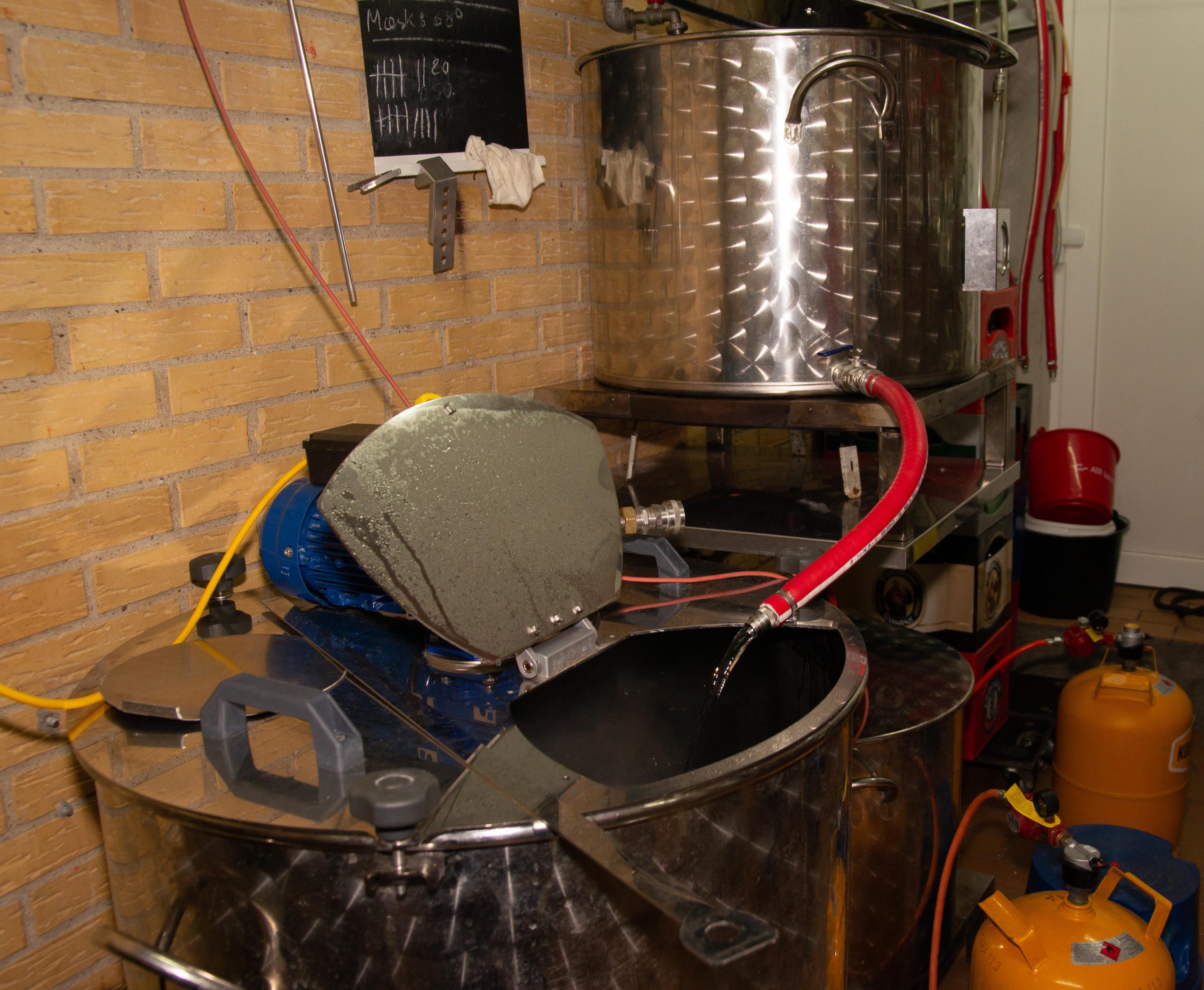
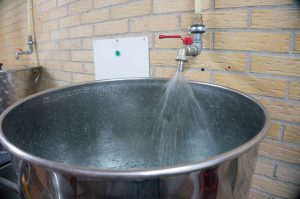
The flow-through water heater of 21 Kilowatts can heat the water to approx. 50°C. while we fill the wessel.
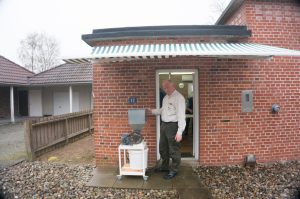
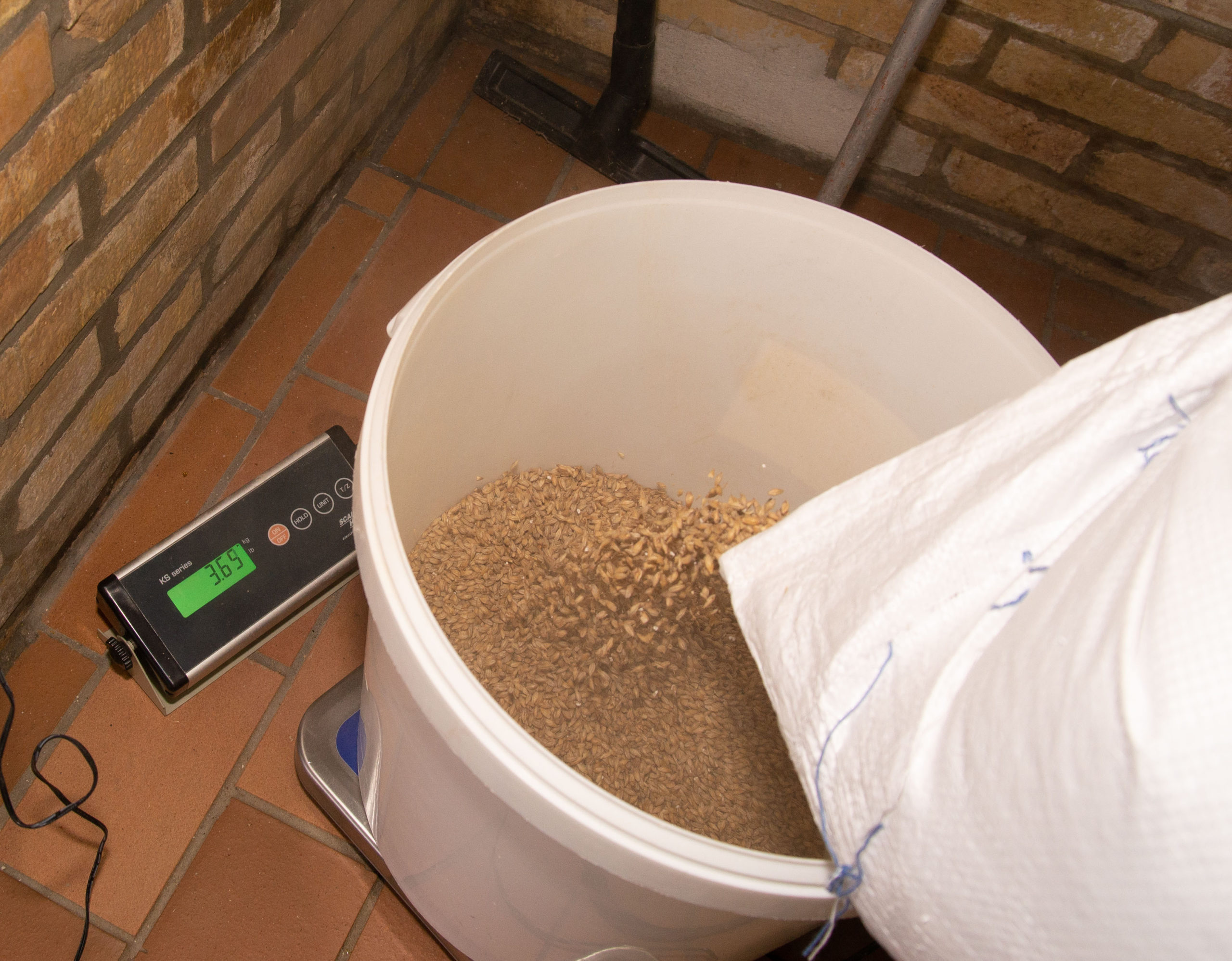
The malt is weighed on an electronic scale when less than 25 kg is to be used.
The malt must be rolled before it enters the mash pan. We have a really good 3-roller Monster Mill.
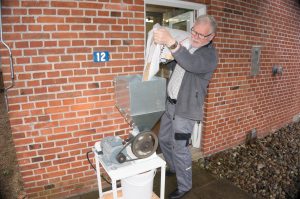
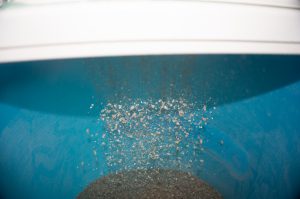
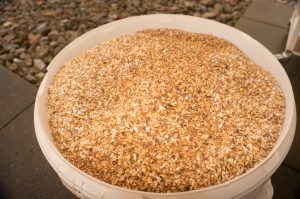
It is important that the malt is not rolled too finely. The shells just have to be broken so that the contents become available and can be dissolved.

The rolled malt is poured into the mash wessel and stirred in the meantime so that it does not clump together.
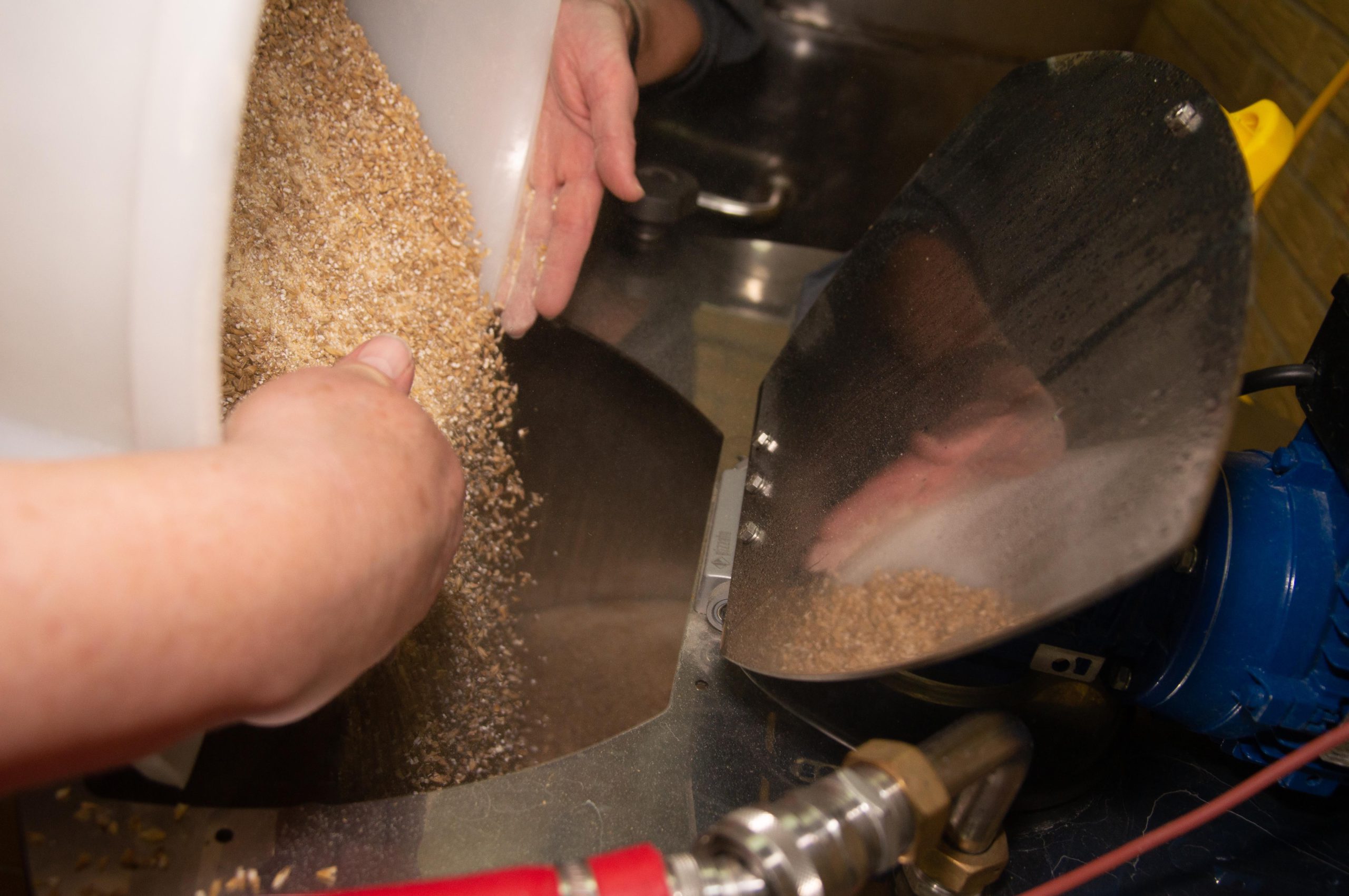
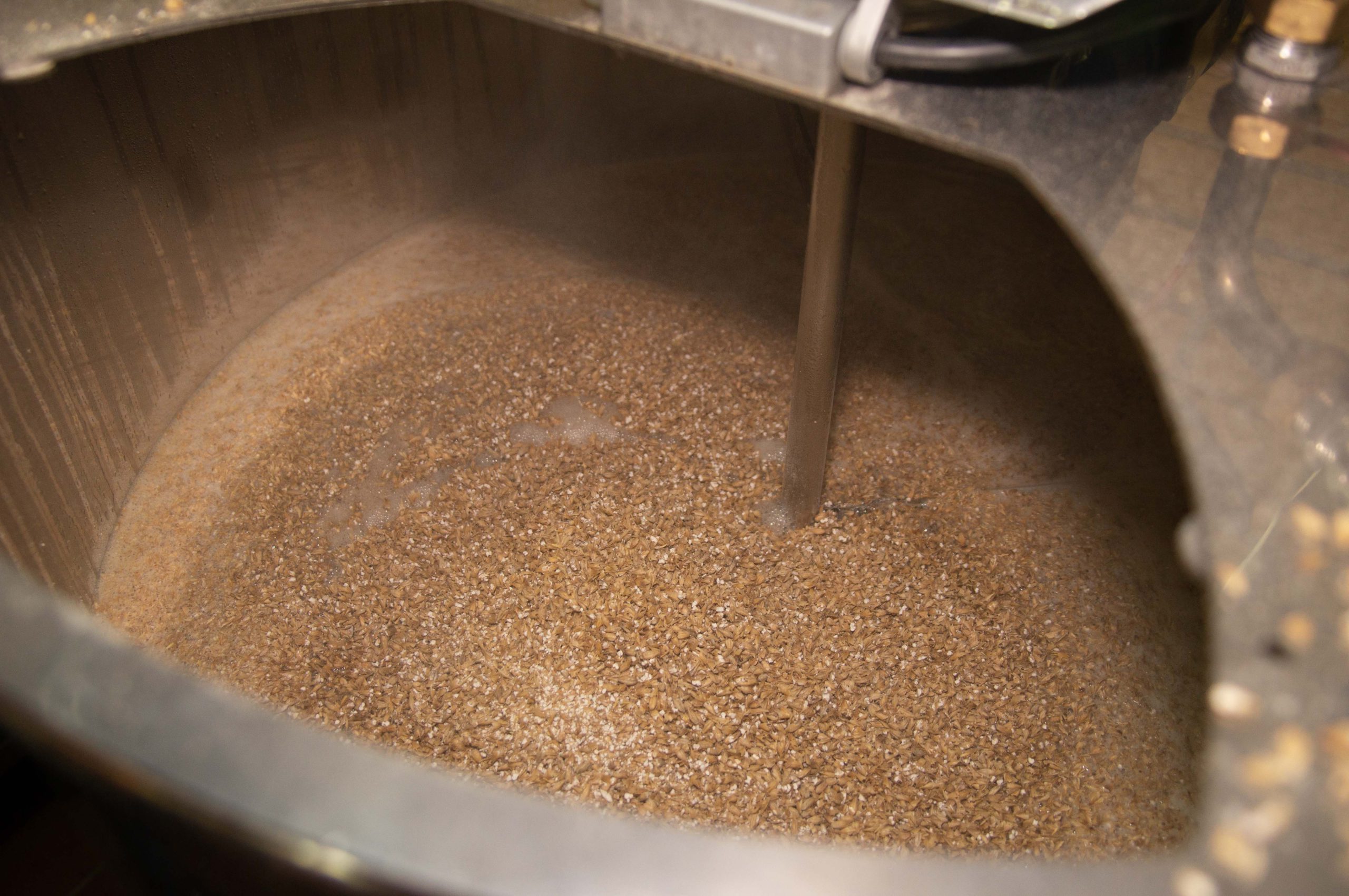
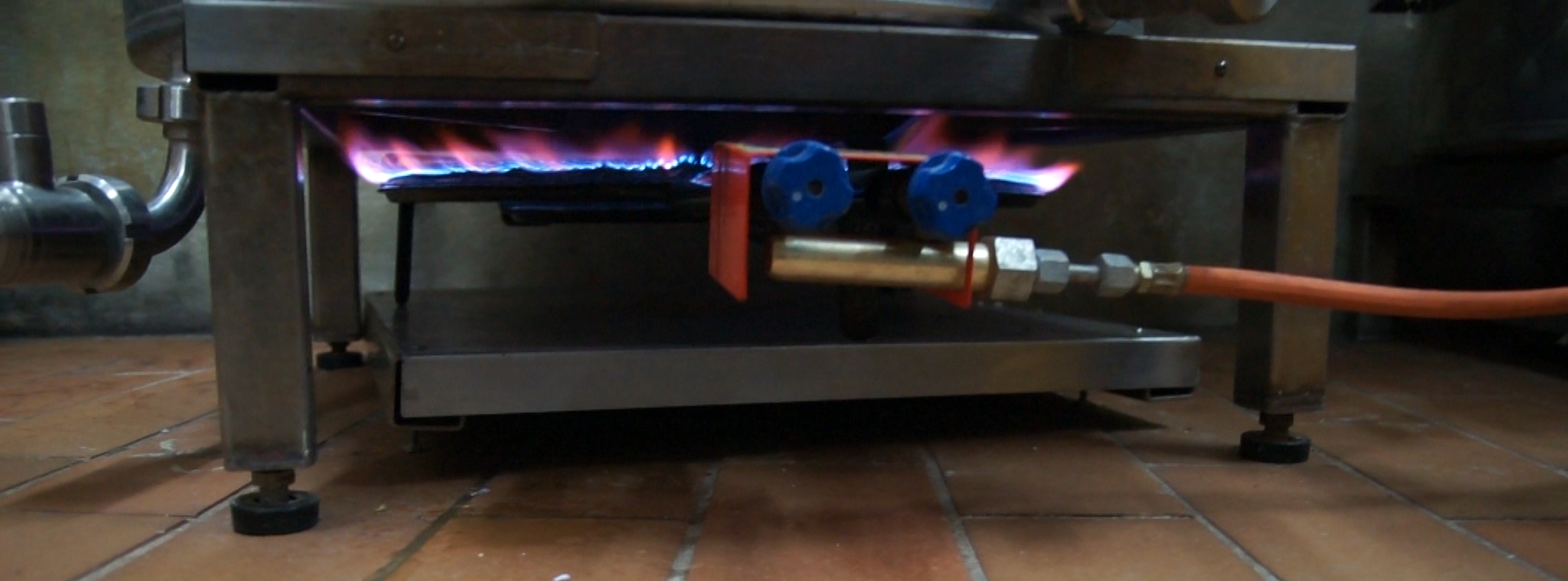
After the mashing period of 1½ hours, the liquid is pumped to the herb pot and boiled. Hops are added when the wort has boiled for 30 min., it is the hops that give the beer the desired bitterness. 10-15 minutes before the wort is finished boiling, add the hops that will give the beer aroma.
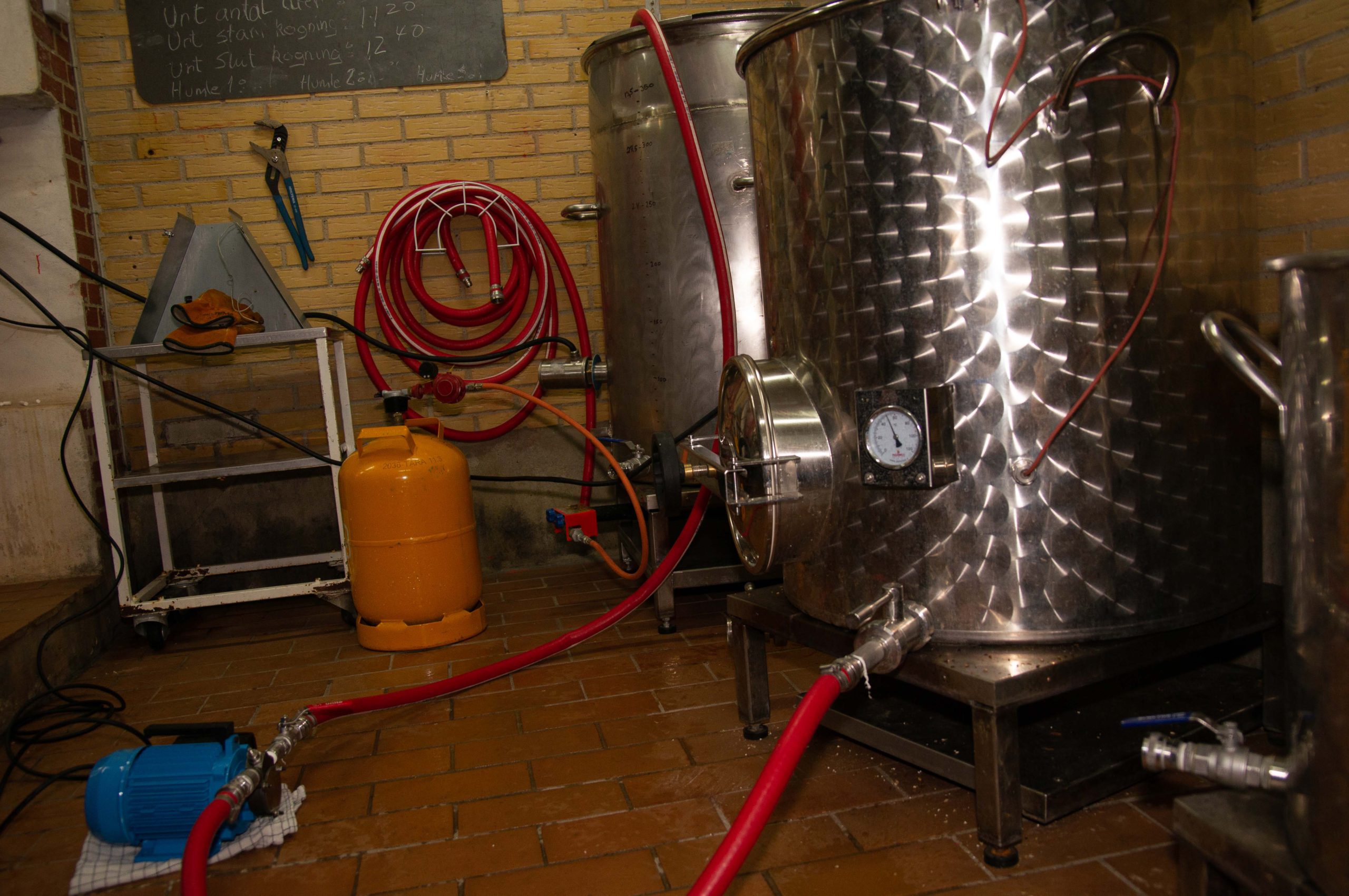

We have established an efficient extraction system which takes a lot of steam and heat during mash and boiling.
Up to 500 m³/hour can be vacuumed steplessly. The curtain catches steam like a hood.
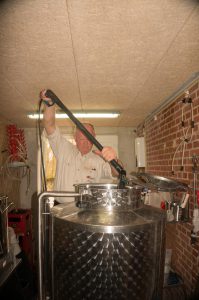
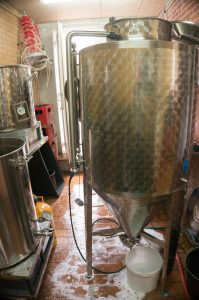
While the wort is boiling, we clean and sterilize the fermentation tank. The tank is 380 litres.

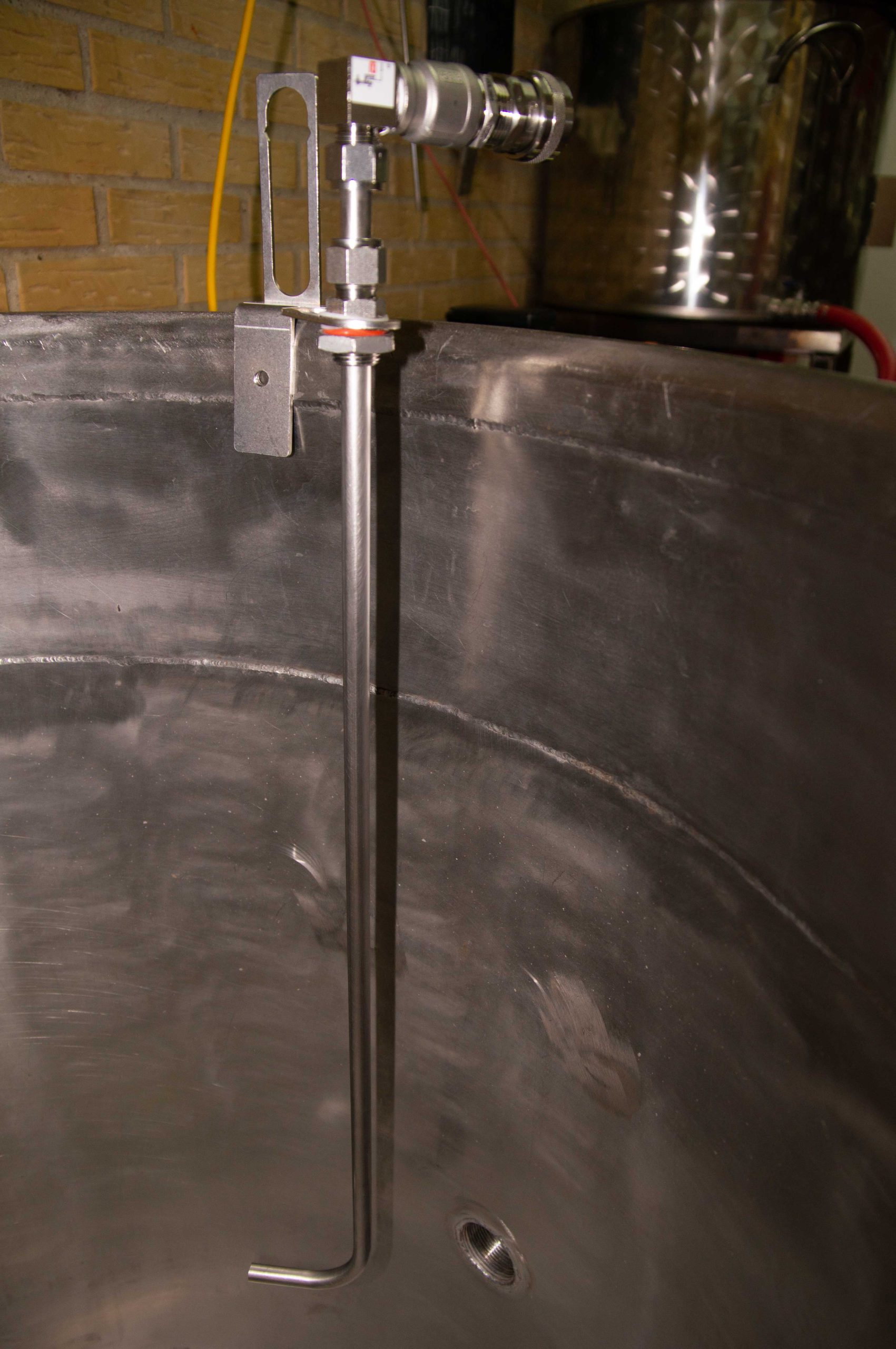
As something new, we have bought a strainer and a Whirlpool spray arm for our wort wessel.
Turned out to be very effective.
As something new, we pour the hops directly into the wort wessel without a hop sock or hop strainer.
After boiling, an efficient Whirlpool is made which collects proteins and hop residues in the basket at the bottom of the wessel.
Shown here while we pump the wort to the fermentation tank.
Shown here while we pump the wort to the fermentation tank.
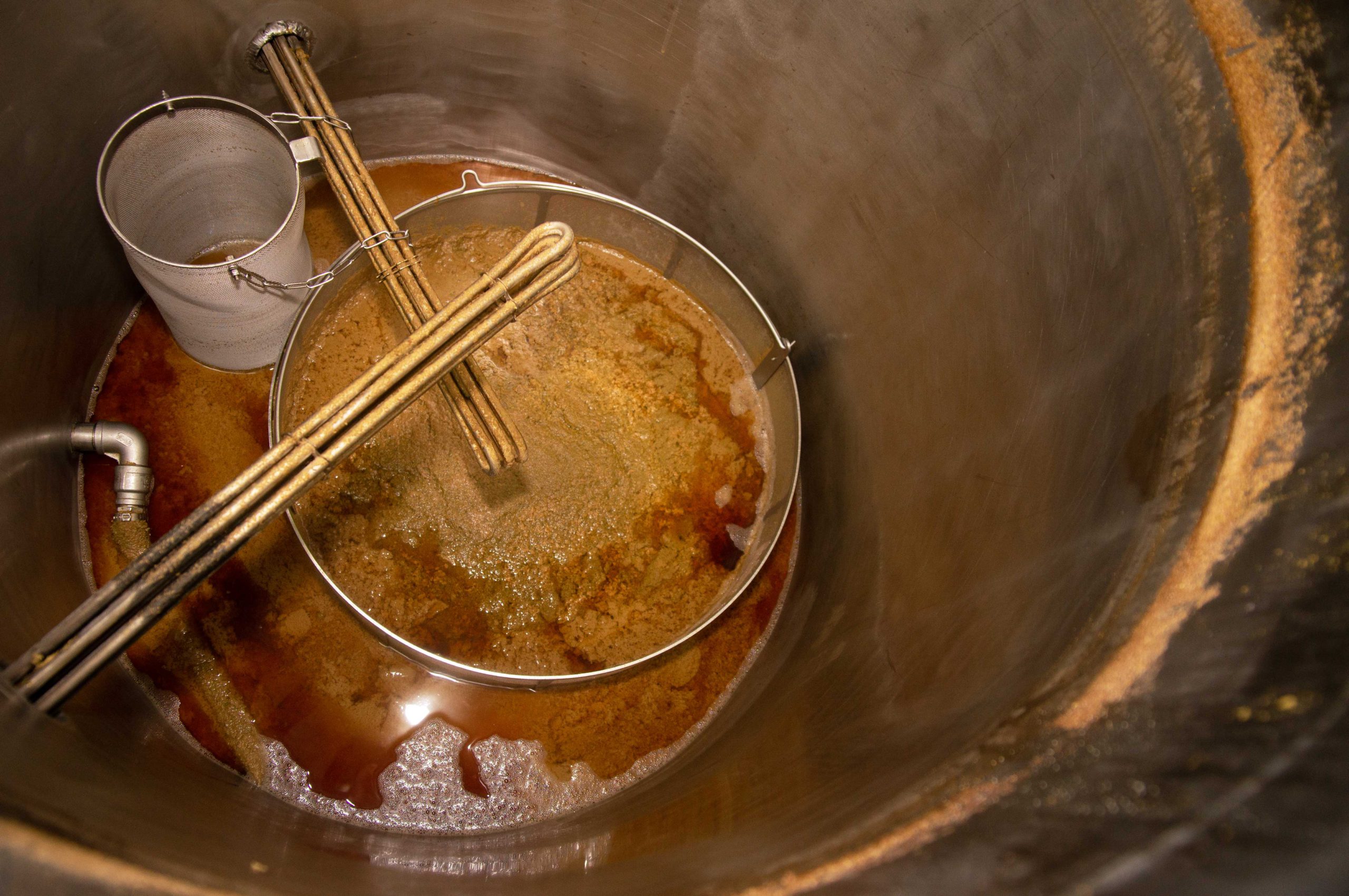
The sieve at the bottom catches proteins and hop residues so we avoid too many impurities in the fermentation tank.
The sieve is Ø50 and 14 cm high.
The cooked wort must now be pumped over to the fermentation tank. We use a stainless plate cooler to cool the wort down to 18°C while it is pumped over.
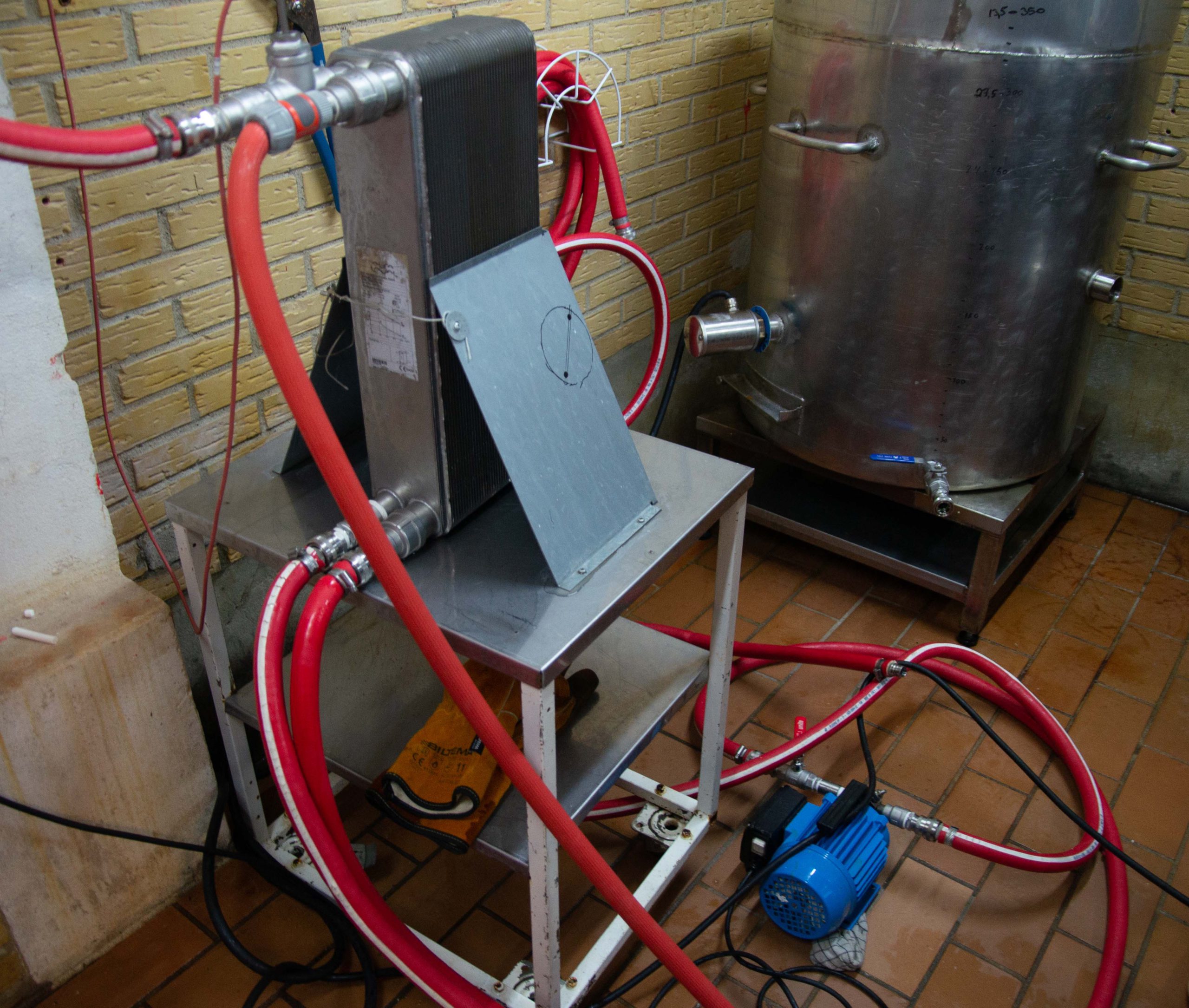
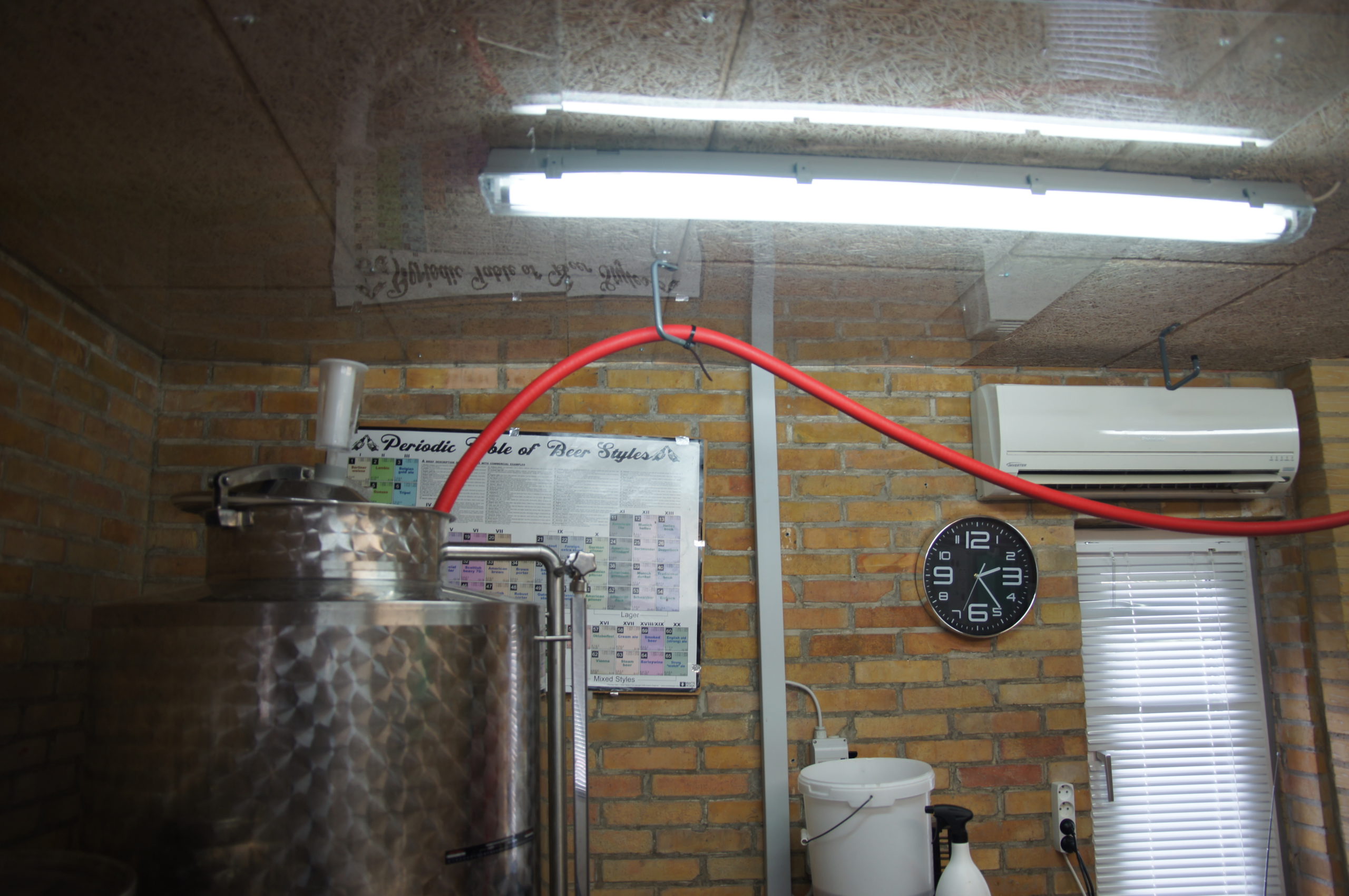
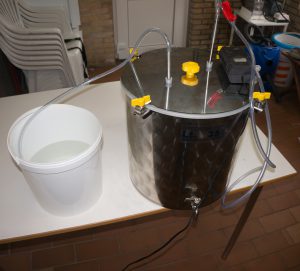
When all the Wort is pumped over, add the prepared yeast. We have made a portion of yeast which has multiplied for 3 days.
Then 300 liters of Sierra Nevada Pale Ale are brewed, with plenty of hops.

